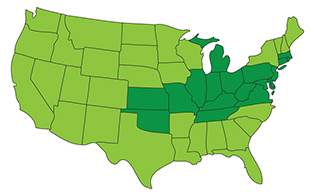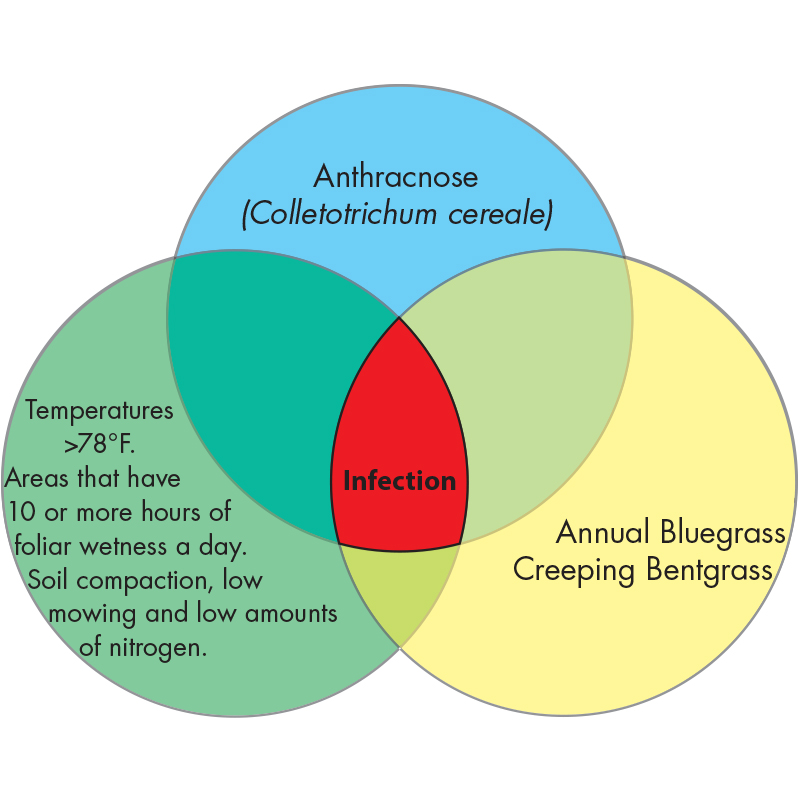
Anthracnose
Colletotrichum cereale
Anthracnose is a lawn disease caused by the lawn fungus Colletotrichum cereal. Anthracnose strikes Annual Bluegrass and Creeping Bentgrass all over the country, occurring most in midwestern and northeastern states from April through November.
Identify

Foliar
Signs of Anthracnose include irregular-shaped yellow or brown patches on your lawn and yellow lesions with black centers on grass leaves. Infected grass shoots detach easily, and in some cases, dead foliage and stems get covered with microscopic, black fruiting bodies. During late winter through fall, this lawn fungus can cause the base of grass stems to rot. Anthracnose is a common lawn disease that attacks Annual Bluegrass on golf course fairways and greens.
Life Cycle
An Anthracnose infection can occur only if all of the following conditions are present: 1. Pathogen: Colletotrichum cereale lawn fungus 2. Host: Annual Bluegrass or Creeping Bentgrass 3. Environment: Warm, moist areas experiencing temperatures over 78°F plus 10 or more hours of moisture on the grass each day

Control
Because you can't change your environment, the best way to control Anthracnose is to create conditions that will foster a healthy lawn. Not only will this make your lawn unfavorable for Anthracnose growth, but it will also lower your risk of extensive damage should the lawn disease develop—plus you'll have the type of lawn you'll want to live on. For Anthracnose control and lawn fungus treatment, TruGreen® recommends the following cultural control tips: • Increase lawn-mowing height • Decrease the amount of stress caused to the grass • Maintain adequate nitrogen levels and a balanced fertility program • Water deeply one to three times a week rather than lightly every day • Don't aerate your lawn when disease symptoms are present
Diagram








